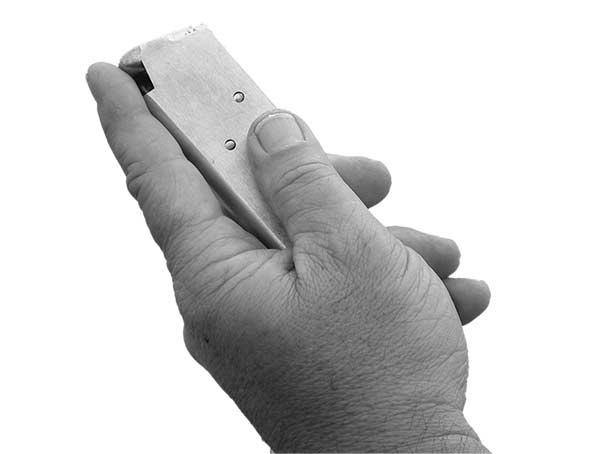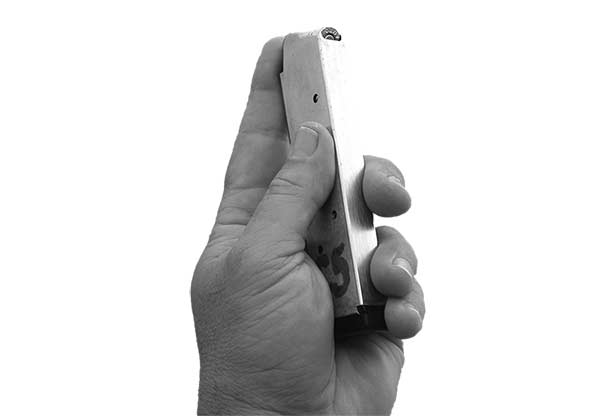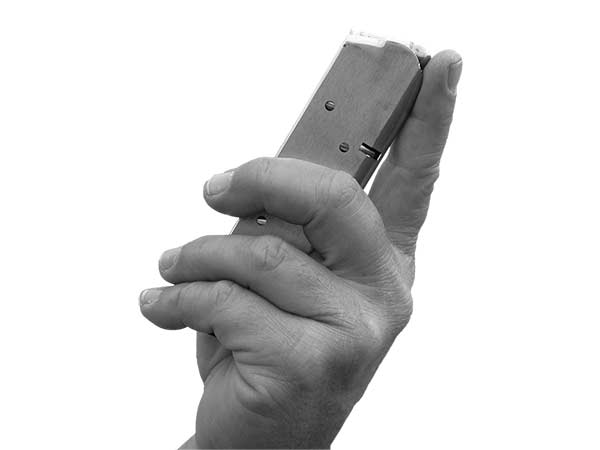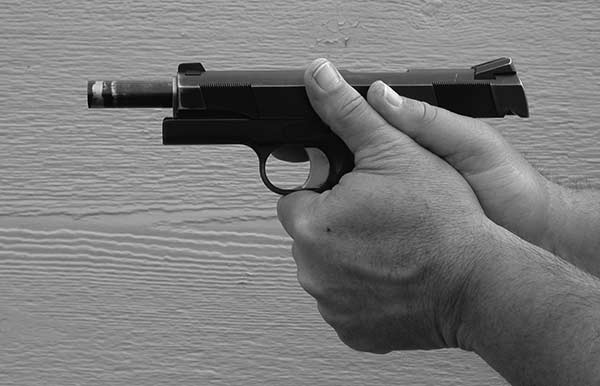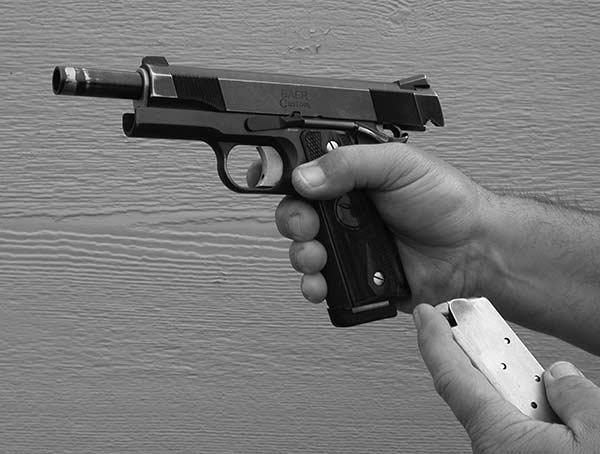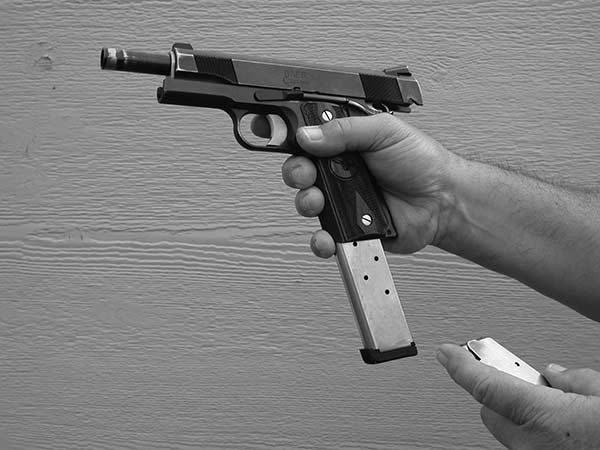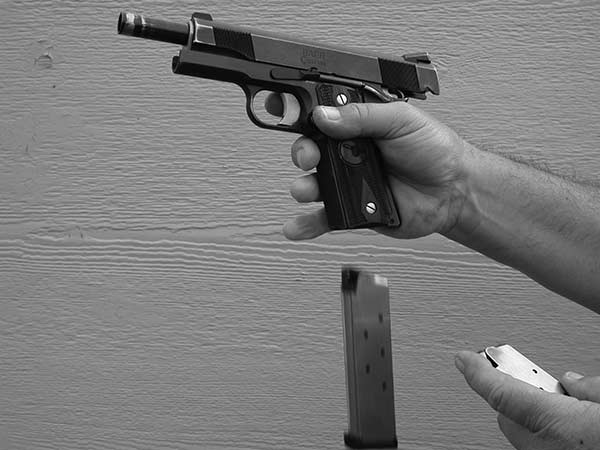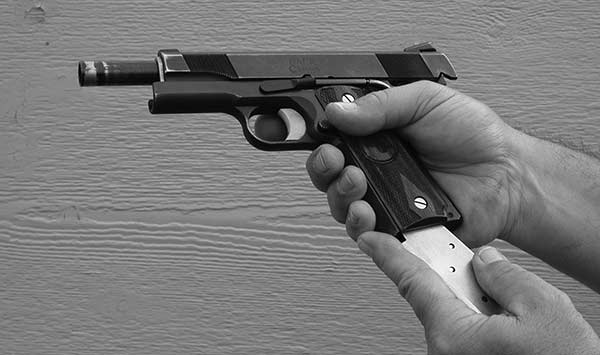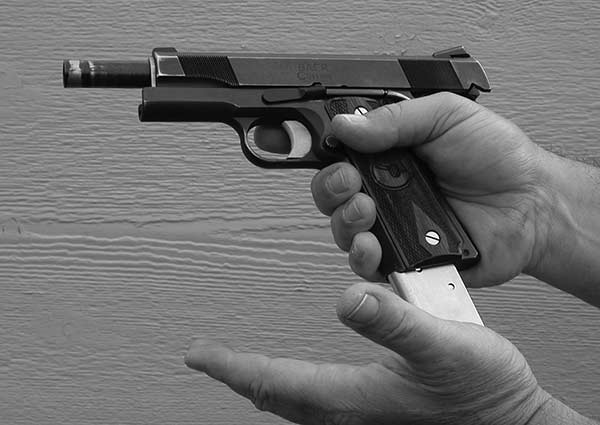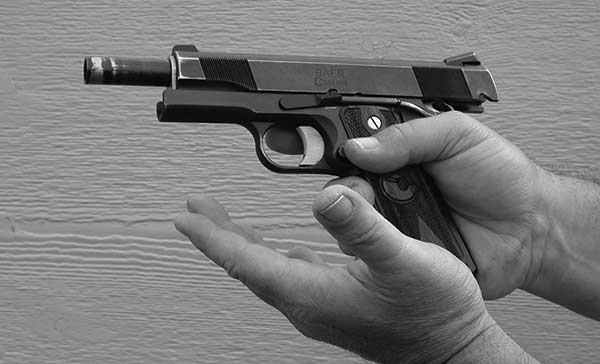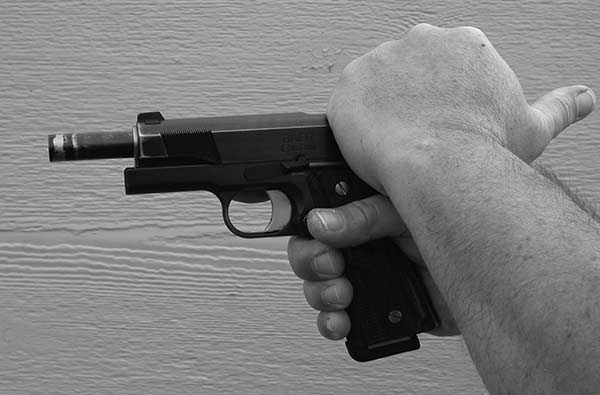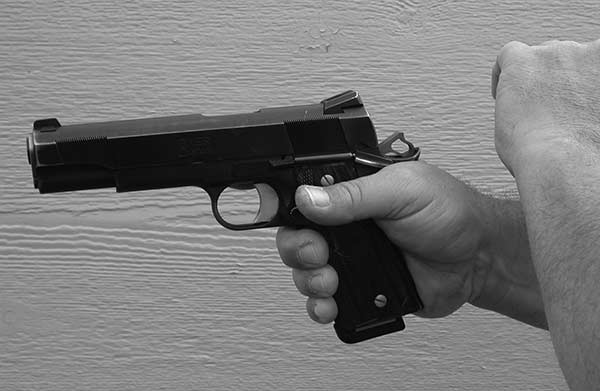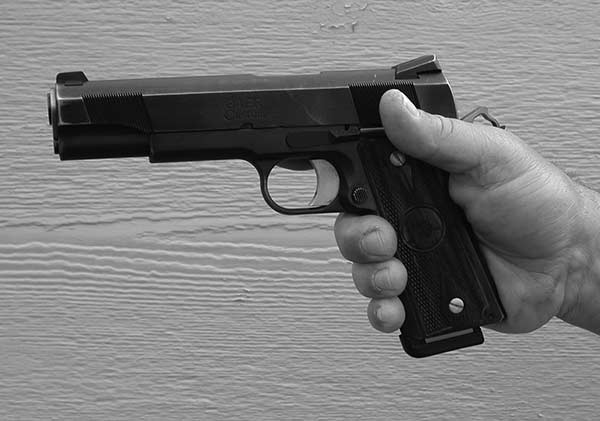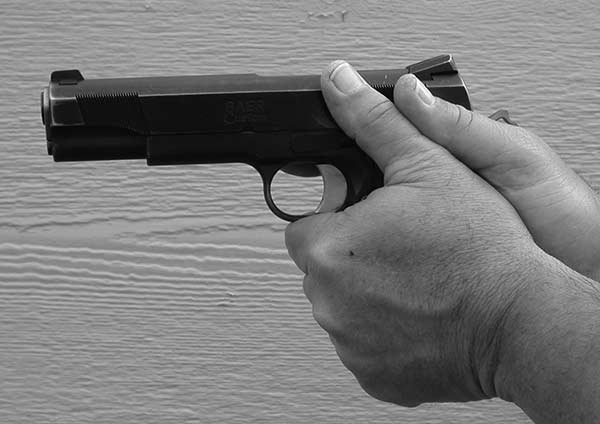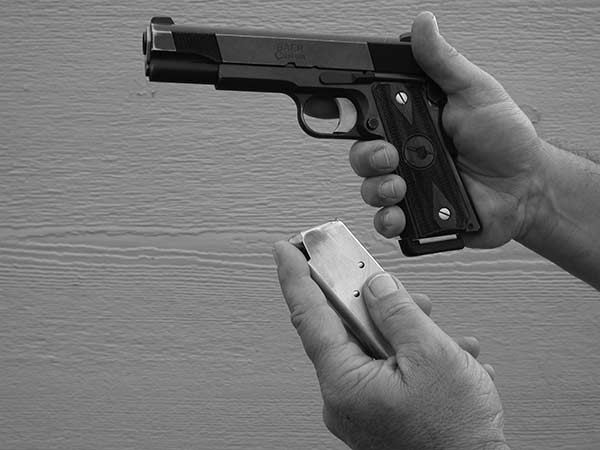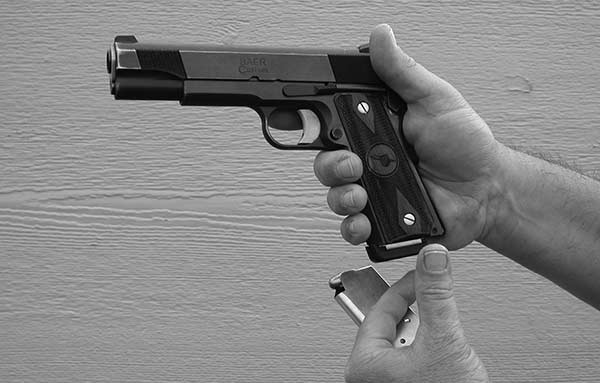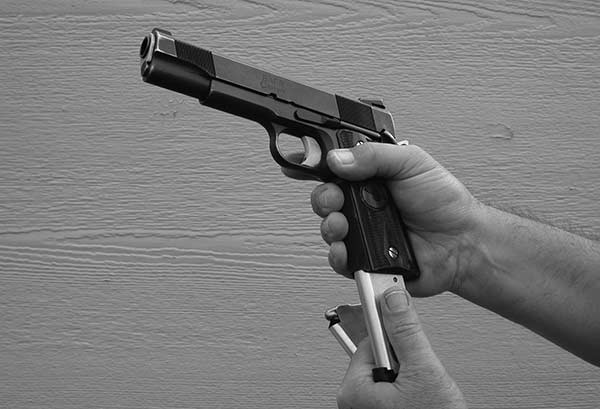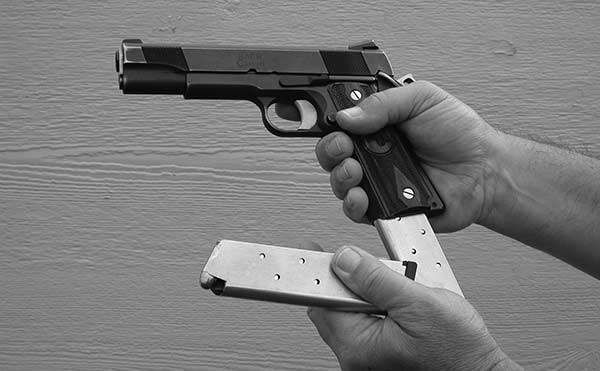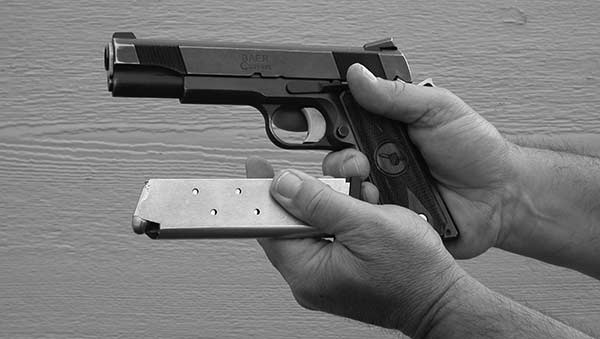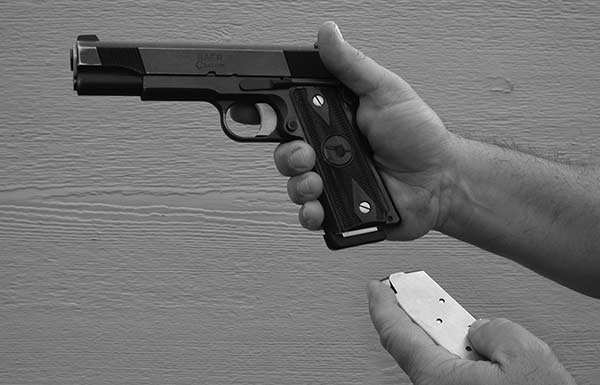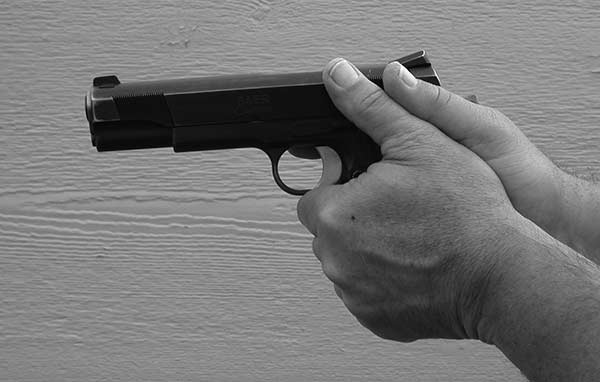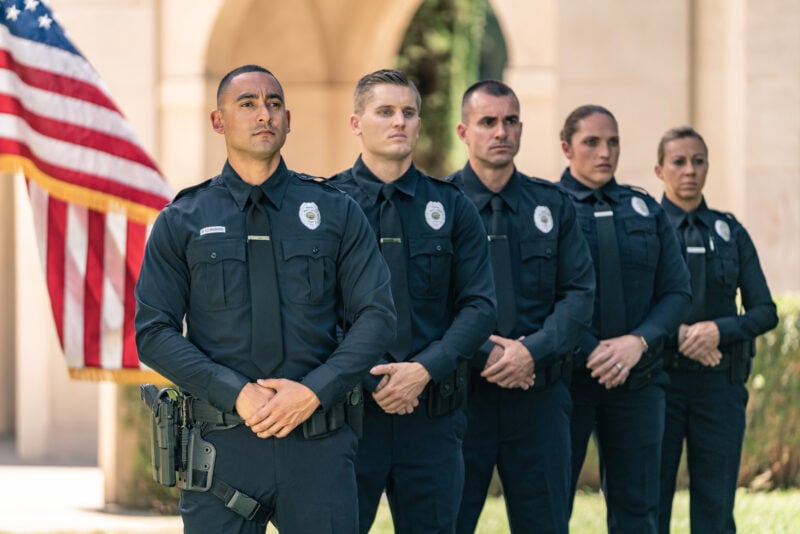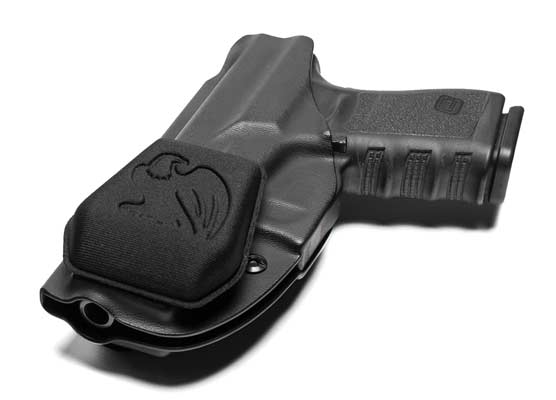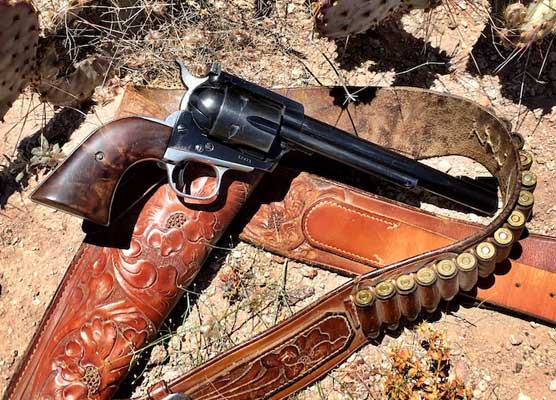Auto Pistol And Continuity Of Fire
You Gotta Reload When They're Empty
To date I have not been able to figure out how to have my firearms continuously fire without reloading for an hour and fifty-five minutes like the Hollywood movie gun users. Bluntly, why real people ever worried about what the Hollywood court jesters did with firearms in their goofy movies is beyond my mental grasp anyway … but for some reason the unwashed masses care. I do not, and you shouldn’t
EMPTY LOAD
Empty Load
If you have a firearm, any firearm, and shoot it long enough in a big enough fight the gun will go empty. The fact that the firearm is empty is nothing more than reality and is basically a moot point in that it is not nearly as critical as the issue of what we do with the firearm when it does in fact go empty. With the tactical considerations of using available cover and dodging incoming fire from the threat being issues of interest, a priority then might be to maintain visual contact if tactically prudent and physically load our firearm back to capacity and engage the threat as required.
Semi-Auto Pistol Caveats
Not all semi-automatic pistols have the same part locations or the same mechanics of design. The slide lock on the 1911 and the SIG220 are not in the same location and neither is the slide lock on the Heckler & Koch P7. That said, as shown in the photos I load and cycle the slide the same for all auto pistols regardless of where the slide lock is.
We’ll call it technique A. This is done by letting the empty magazine fall, then replace it with a full magazine. Next, bringing the support hand over the top of the slide, grasping the slide with the thumb pointed towards the body and smartly pulling the slide to the rear to full extension and releasing the slide allowing the slide to go forward and chamber a new cartridge.
What we’ll call technique B relates to some pistols like the 1911 and Glock. These pistols have a slide lock that once the fresh magazine is seated, the left thumb can pull down on the slide lock lever allowing the slide to move forward and chamber a new round. The use of technique B is arguable as not all pistol slide locks are in the same place. Technique A will load all pistols regardless of where the slide lock is located. It is duly noted here that if you only use your gun, the slide lock lever being pulled down by the left thumb is or could be faster. I have never seen a stopwatch in a fight so I’m not worried about the time factor as much as I concern myself with weapons systems I might pick up being functional and operating in a fight. In a fight I would like to be able to reload all pistols that I might encounter not just mine, and I would like to reload them all as well as I could.
TACTICAL LOAD
Tactical Load
The tactical load is the conservation of ammunition and/ or magazines. The magazines could be either partially loaded or empty, although the saving of partially loaded magazines is generally accepted and understood. The cause of or for the tactical load is the firing of the weapon but not to a point that the slide locks to the rear. Based on supporting cover fire, a partner, or protective cover and or the belief that the fight is over, the firearm could be brought back to full ammunition capacity by exchanging the partially used magazine in the pistol for a full magazine taken from its support position (be it pocket, mag pouch or night stand). The partial expended magazine is then stored in pocket or pouch.
Points Of Interest
As stated the tactical load is used to save or conserve ammunition or magazines. It is correctly used — if at all — in a lull or at the end of a fight. The flaw with the tactical load procedure is the strong probability of a mis-handle or mis-load of the new magazine because of manipulation under duress or lack of experience. The rounds in the working pistol that so far have saved your life may be better in the pistol than the manipulation or attempted reload that may foul the pistol.
The Best-Case
The best-case scenario is that you have a partner with a loaded weapon covering the threat or threat area. From cover or concealment you place a fresh full magazine of ammunition into the pistol, by first dropping the partially used
magazine between the thumb and index finger thereby clearing the way for the new magazine. Seat the new fully-loaded magazine into the pistol firmly. Place the partially loaded used magazine in a secure place. Upon placing the support
hand back on the pistol it is strongly recommended that you “tug” firmly on the base of the newly seated magazine to confirm and assure it is absolutely seated and locked.
Subtle Tactical Stuff
Why carry more than one magazine? Your pistol with only the magazine in it — regardless of capacity — is a bad idea and it could be damaged by the fight or environment. It would be good to have another magazine to replace a damaged one or in case you need more ammo. It could happen. You will be in the gunfight only as long as you have ammunition to shoot back. No ammo, no shoot … no shoot, no more fighting back.
I know we’re all going to die someday, but it should not be for a lack of shooting back.

